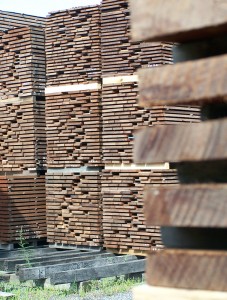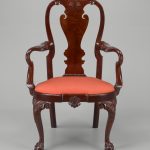We may receive a commission when you use our affiliate links. However, this does not impact our recommendations.
 When I started my job as director of marketing at a lumber company, I received an e-mail from Christopher Schwarz telling me that I would be in a unique position to help educate scores of woodworkers about wood, something they ironically know little about. I laughed it off at the time and felt he mostly was referring to how small a part we woodworkers play in the business of lumber.
When I started my job as director of marketing at a lumber company, I received an e-mail from Christopher Schwarz telling me that I would be in a unique position to help educate scores of woodworkers about wood, something they ironically know little about. I laughed it off at the time and felt he mostly was referring to how small a part we woodworkers play in the business of lumber.
Four years later, I have been labelled “the wood guy.” I field thousands of questions from all over the world about wood. Which species should I use? Will wood movement make my project explode? Is this species good for hand tool work? How do I stop my wood from cupping?
The list of questions goes on, and now I’m beginning to understand what Chris meant. Woodworkers often don’t know wood.
Fear of the Material
Despite our love of wood and working with it, it seems that many woodworkers are just plain afraid of the material! We have been told to pay attention to wood movement and that certain woods work better than others with certain tooling. Every time we check, some new information is added to the pile (some of which contradicts what we just read). Add to this confusion the fact that good lumber is expensive. Now we have a woodworker that just plunked down a bunch of cash on some prized boards and has no idea what to do to keep from ruining it.
Here is the good news: You’re not alone. Every day, I hear from professionals in all walks of life who are just as confused about using lumber. Some of these door and window manufacturers, boat builders, home builders and luthiers buy and use thousands of board feet each week, yet they can be just as clueless as the garage shop guy who consumes 50 board feet a year.
It does seem, however, that hobbyists and professional, small-shop furniture makers have a lot more interest in learning about wood and its behavior than most large-scale builders.
The 4-part Wood Education “System”
So that’s why on Wednesday, May 28th, I ran a web seminar with Popular Woodworking University on the topic of knowing your lumber. I will talk about a 4-part system (sounds so official doesn’t it) that I have found to not only help you identify good woods to work with, but also to remove your fear of trying something new. In this hour-long presentation I will cover some of the technical attributes of wood and how they relate to you in your shop. Some of this readily available data can be invaluable to determining how a wood will work and – most importantly – why. The really cool thing is you can then apply these points to any species of wood, anywhere in the world, and have a pretty good idea how it works with both power and hand tools. I hope to cut through a lot of the extra data and explain 4 things to look for and why those 4 attributes should be considered. For my Hand Tool School members, you may remember a lesson called “The Hand Tool Wood World Tour” that was the seed of this presentation.
Of course wood is highly variable and there will always be other points to consider specific to your application and your species of choice. It is this variability that makes woodworking so much fun and the global marketplace we live in today so exciting. But I hope that with the information gleaned from this webinar the woodworker will be less afraid of the wood and more inspired by the incredible palette nature has to offer.
Stay tuned to this blog for future installments on this topic, and feel free to ask any questions you already have in the comments section below.
–Shannon Rogers
Here are some supplies and tools we find essential in our everyday work around the shop. We may receive a commission from sales referred by our links; however, we have carefully selected these products for their usefulness and quality.








